If you have a lean 17 inch bicep measurement, then your arms are way about average in terms of circumference and muscularity.
Now, just how impressive 17 inch biceps are depends on your height, build, and body fat level.
Obviously, if you’re 6’9″ and 30% body fat, 17 inch arms aren’t that impressive and will likely look smaller than they actually are.
On the other hand, if you’re 5’9″ with lean 17″ biceps (roughly 43 cm biceps), then your arms will look jacked and perhaps even borderline non-natty.
The following biceps guide makes use of real-life case studies and practical tips so that you can learn how realistic it is for you to achieve 17″ arms as a natural lifter.
See How Your Biceps Stack Up:
- 13.5 inch biceps
- 14.5 inch biceps
- 15.5 inch biceps
- 16.5 inch biceps
- 18.5 inch biceps
- 19.5 inch biceps
Are 17 inch arms big?
Are 17 inch arms considered big for a natural lifter?
Yes, in general, 17 inch arms are considered big for a man who lifts weights on a regular basis.
Even if you’re a competitive natural bodybuilder with a decade of training experience under your belt, 17 in biceps are still very impressive and much bigger than average.
Just how big and impressive your 17 in arms are depends mainly on your height and body fat.
If you’re really tall, let’s say 6’4″ and over, then 17″ arms will definitely still look big if you have a low body fat level. However, the same arm size won’t look as big on you as it will on a guy who’s only 5’8″.
This is because taller lifters have considerably longer bones (and thereby longer muscle bellies) than shorter lifters.
Therefore, at an equivalent arm size, the shorter guy will always have better-looking biceps and triceps because his arms will be more filled out in relation to his genetic potential (on the other hand, taller people are capable of building bigger overall arms because they have more bone mass to “hang” the muscle on). [1]
Are 17.5 inch arms impressive?
You might not think that there’s much difference between 17 inch and 17.5 inch arms, but there actually is. As you’ll soon learn in our third case study, it can take years to add half an inch of arm mass when your guns are already 17 inches.
So are 17.5 inch biceps (44 cm biceps) impressive?
You bet they are!
99% of lifters will never have well-developed 17.5″ arms. So you can count yourself well above average if your arms are 17.5 inches flexed. [2]
Now, if your body fat is in excess of 25%, then your 17.5 inch biceps may not actually look as big as they are because the fat will cover the separation between your biceps and triceps.
On the other hand, if you can see plenty of arm definition when you flex your biceps, then your 17.5 in arms are definitely legit.
17 inch bicep case studies
These eye-opening 17 inch arm case studies show you what it takes for people of various heights, builds, and training experience to build lean 17 inch biceps.
Case study 1: Dylan Berg
Dylan Berg made an excellent video a while back giving you his proven tips on how to get 17 inch arms flexed as a natural lifter. The video is so useful that I recommend watching it in full.
He has lean 17 in biceps at a height of 5’8″, which is incredibly impressive considering that his arms have plenty of separation.
Dylan notes that if you overlook the importance of gaining weight, you’ll never get 17″ biceps no matter how much you train.
This makes perfect sense. After all, there are obese individuals out there who have 17″ arms because their body weight is high, not because they lift weights or even exercise.
Now, he does also make the point that you shouldn’t get too fat (he recommends putting on at least 2 lbs per month). However, he also makes the point that it takes around 10lbs of body mass to trigger an inch of circumference growth. So if you want to go from 14 to 17 in arms, you’ll need to put on around 30 lbs.
As for training, Dylan says that training your arms daily (alternating between biceps and triceps) with 1-2 sets is much better than blasting your arms with a ridiculous amount of sets once per week.
This is because increasing your arm training frequency enables you to take advantage of regular protein synthesis spikes and keep your arms in a constant state of growth.
He also mentions that you need to hammer the long head of the triceps if you want to achieve 17 or 17.5 inch arms because it’s the biggest muscle in the triceps by far (it accounts for around two-thirds of your triceps size).
Case study 2: Frank Tufano
Like Dylan Berg, Frank Tufano is 5’8″ and has natural 17 in arms.
The first thing that you’ll notice is that his biceps and triceps are absolutely shredded. So just imagine how big his arms would be if he bulked up to 15% body fat!
While his arms are clearly strong and capable of lifting heavy weights, Frank notes that you don’t have to lift as heavy as possible all the time. Instead, you can often build better arms by lifting lighter but with an enhanced focus on really feeling your target muscles do the work.
After all, your biceps and triceps and just pieces of meat, they can’t tell how much weight you’re lifting.
In summary, Frank’s arms, which are considerably more developed than the rest of his physique (though his other muscles have plenty of size to them as well), are likely what dedicated natural lifters can hope to achieve at a maximum if they train hard on a consistent basis.
Case study 3: Elijah Martinez
Elijah Martinez is a classic natural bodybuilder who has 17.5 inch biceps at a height of 5’11”.
While many people don’t believe that he’s natural, given that he has both remarkable arm size and excellent condition, I believe that it’s highly likely that he is.
First off, in his 2017 measurement video that’s linked above, his arms were dead on 17 inches. 4 years later, in 2021, his arms were 17.5 inches. While a gain of half an inch is impressive, it’s not what you’d expect for someone who’s juicing.
Elijah is an excellent case study for the dedicated natural bodybuilder. If you’re about 6 feet tall like he is and are willing to put in years of hard work in the gym, then 17 or 17.5″ arms are likely the maximum size that you can hope to achieve while maintaining a relatively low body fat level.
How to get 17 inch arms naturally
Learn how to get 17 inch arms naturally with these proven training and diet tips.
Purposeful bulking phases

Unless your body weight is increasing, then your arms are unlikely to be growing.
Bulking up in general almost always results in building significantly bigger arms because all of your circumference measurements will get thicker when you gain weight.
By purposeful bulking phases, I’m talking about maximizing the use of the extra calories by training intensely.
Since you’ll feel stronger in the gym now that your body is in an energy surplus, your bulking phases are the perfect time to gain strength and lift heavy.
If your biceps and triceps are stronger than they were pre-bulk, then there’s a high chance that they’ll have considerably more mass at the end of your bulking phase.
Additionally, if you train hard while eating in a calorie surplus, then more of the energy that your body takes in will be partitioned towards muscle growth rather than fat storage. [3]
So although your body needs time to recover, it’s best to train 5-6 days per week while bulking so that you can make the best use of the calories that you consume.
Build the long head
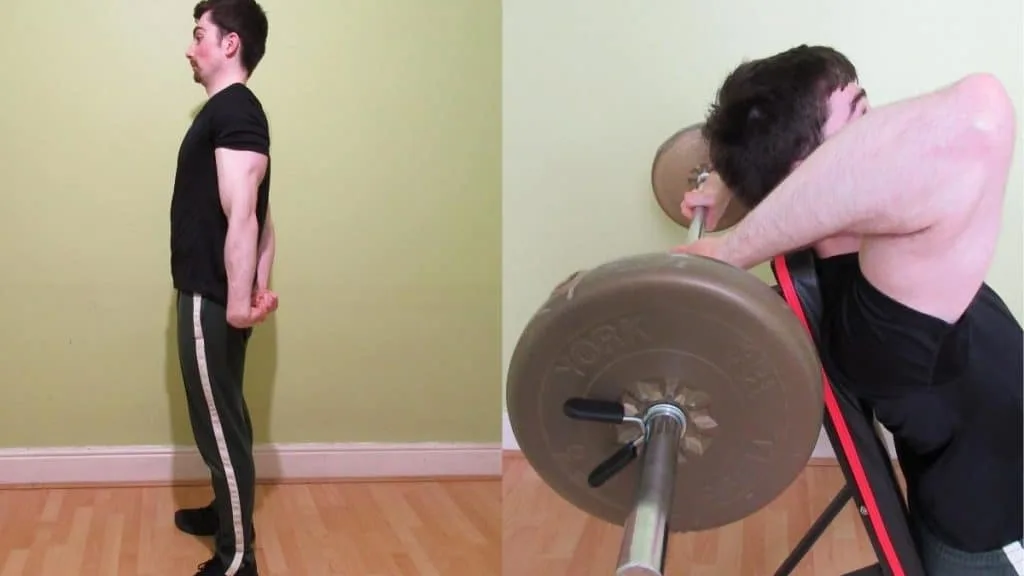
As mentioned, the long head of the triceps is the biggest muscle in the triceps by far. In fact, it’s larger than the lateral and medial heads combined, making it the single biggest muscle in your upper arms.
The issue is that many coaches recommended exercises like close grip bench presses and weighted dips to people who want to build 17″ biceps.
And while it’s perfectly fine and indeed recommended to include these exercises in your routine, they’re not as effective as skull crushers and overhead extensions for building the all-important long head.
While developing the lateral head makes your triceps look aesthetic from the side, it’s the long head that makes your triceps big when you take your arm measurement.
So if you want to get 17 in biceps as quickly as possible, you should focus on exercises that train the long head by performing them when you’re at your freshest and strongest.
Focus on progressive overload
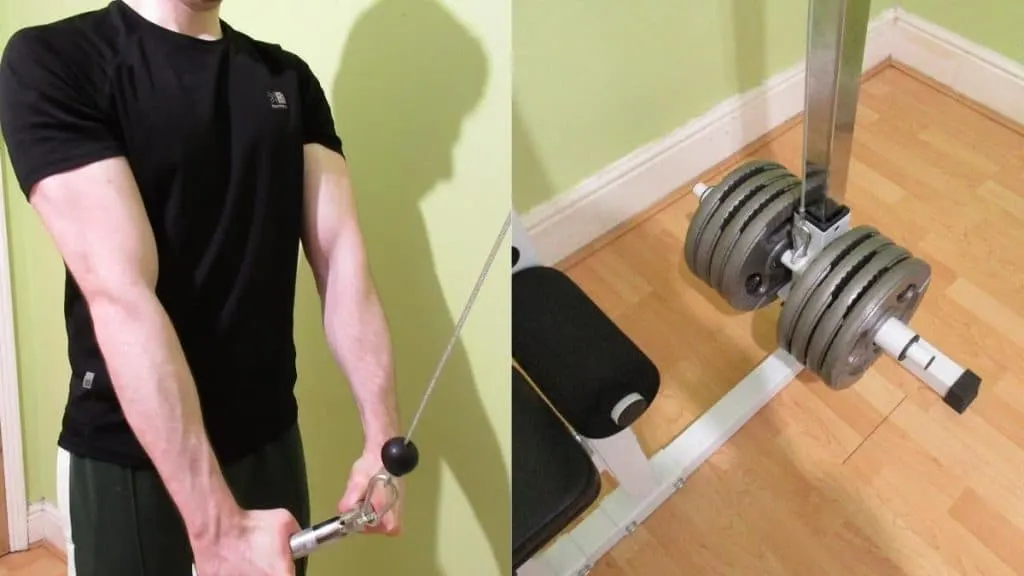
While getting a great bi and tri pump via high rep sets will certainly make your arms temporarily bigger, such a training style won’t lead to lasting muscle growth past a certain point (obviously, if you’re new to weight training, just about anything will trigger muscle growth).
Instead, focus the bulk of your arm training around a few core exercises.
Aim to add weight to these lifts on a weekly, bi-weekly, and monthly basis (exercises that enable you to lift more total weight and which involve more muscles can be progressively overloaded more frequently).
If your biceps and triceps don’t gain any strength, then it’s unlikely that they’ll get significantly bigger.
Sure, lifting light weights for high reps is a viable way to maintain your current arm mass, but if you want to get 17 inch arms naturally, then at some point, you’re going to need to gain strength.
Measure your arms pumped

Although I always recommended measuring your arms cold and flexed, measuring them pumped is undeniably the fastest way to get a genuine 17 inch bicep circumference.
Sure, you might gain an inch or so on your cold measurement, but not many lifters have 17 inch biceps pumped. So you’re still above average if your arms are 17 or 17.5 inches with a massive pump.
Most of the time, though, you should measure flexed and cold so that you can accurately track your progress.
If you take your measurement cold one month and then pumped the next, you’ll kid yourself into thinking that you’re gaining muscle when, in reality, the extra size is just due to cell swelling.
17 inch bicep FAQ
This FAQ tells you everything that you need to know about building 17″ arms.
How long does it take to get 17 inch biceps?

The time that it takes to build 17 inch biceps depends on a few crucial factors.
First off, the faster and harder that you’re willing to bulk, the quicker you can achieve 17″ biceps.
Of course, dirty bulking can lead to excess fat gain, [4] so if you want to stay at least somewhat lean while gaining weight, then you’re best off eating in a moderate calorie surplus.
Additionally, if you’re tall, then you’ll have a much easier time getting 17 in arms than someone’s who’s short. This is because taller lifters have more bone mass (longer bones) than shorter lifters and therefore also have more space to hang the muscle.
In summary, if you’re fairly tall, have good arm genetics, and are willing to maintain a higher than average body fat level (around 20%), then you can likely build 17 inch arms in 3-4 years.
If you intend to stay leaner, however, then it might take 5 or more years to get 17 inch biceps as a natural lifter.
Are there any females with 17 inch biceps?
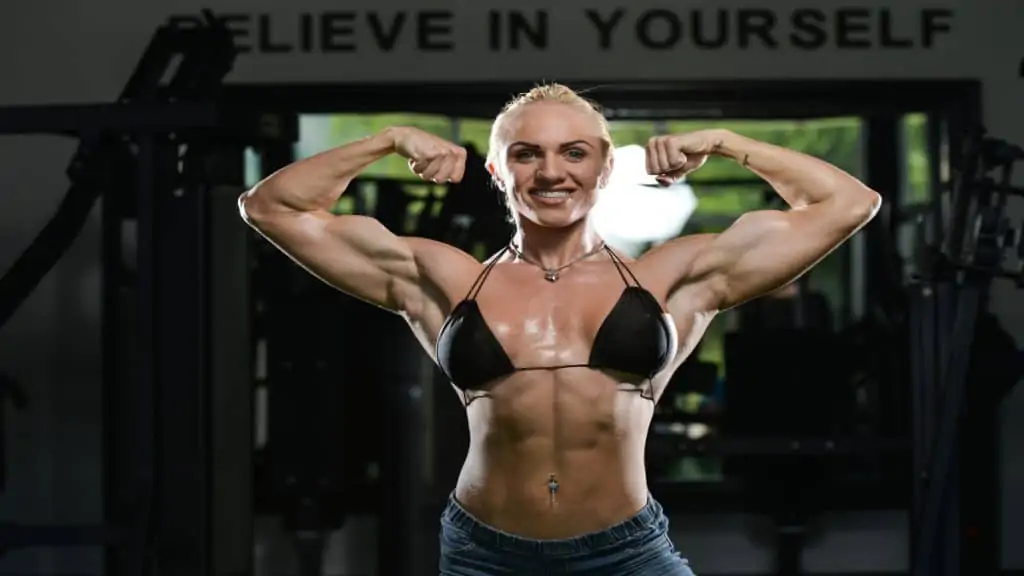
Yes, there are some females with 17 inch biceps. These women—like a lot of men who have 17″ arms—usually fall into one of two categories.
On the one hand, there are larger-framed professional female bodybuilders who have lean 17 and even 17.5 inch biceps.
On the other hand, there are plenty of obese women who have at least 17 inch arms due to having excess body fat (women tend to store more body fat on their arms than men).
Now, are there any natural female lifters who have 17 in biceps?
Well, if there are, I certainly haven’t found any. On average, women have much smaller frames than men, which naturally means that they have less capacity to grow their arms.
Are 17 inch arms impressive at 6 ft?
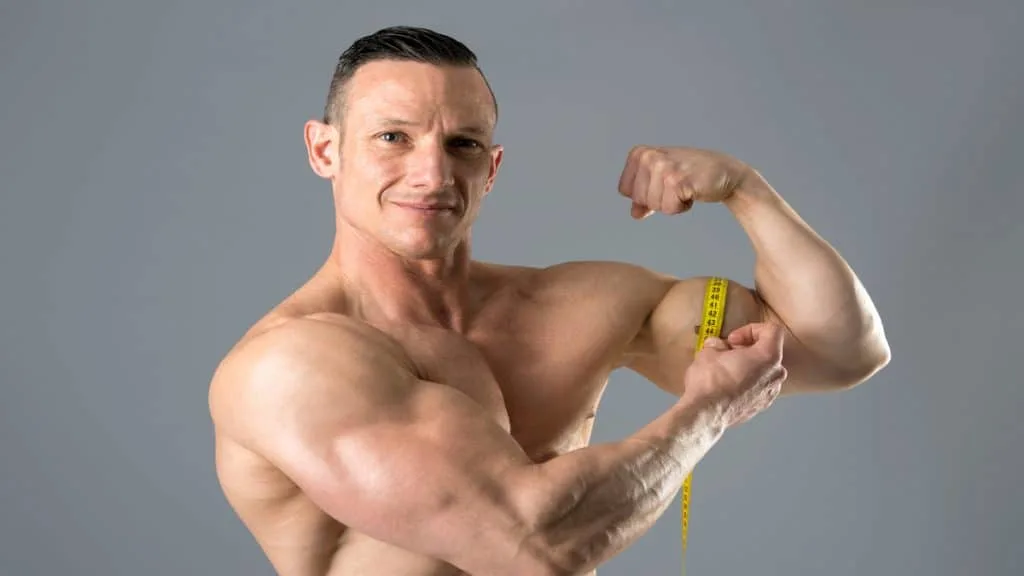
Is having 17 inch arms at 6 ft impressive for a natural lifter?
Yes, in the vast majority of cases, having 17 inch biceps when you’re 6 feet tall is very big and impressive.
The exception to this is if your body fat is excessively high (over 20%). This is simply because once you remove most of the body fat, you likely won’t have 17 or 17.25 inch arms.
Of course, being a bit taller than average at 6 ft does give you a slight advantage when it comes to building your arms because you’ll naturally have much longer bones than someone who’s only 5’5″.
Longer bones, as noted, have a higher capacity to accumulate muscle tissue.
Should you measure them flexed or unflexed?
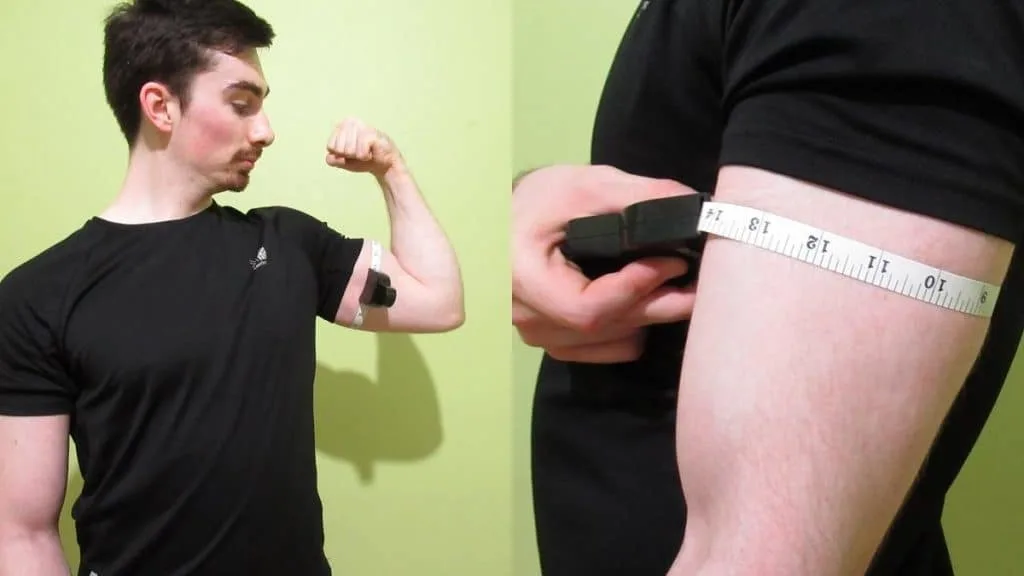
It depends. If you want to get the biggest measurement possible, then measure your arms when they’re flexed and pumped.
Most non-bodybuilding girth measurements are taken unflexed and obviously not pumped.
However, if you’re into strength training, then you’re best off taking your measurements flexed because everyone else who lifts certainly is.
Many people, however—especially online—claim their pumped measurement as their cold measurement, so don’t feel too bad if your arms don’t stack up well to other people’s e-stats.
Conclusion: Can anyone get 17 inch biceps?
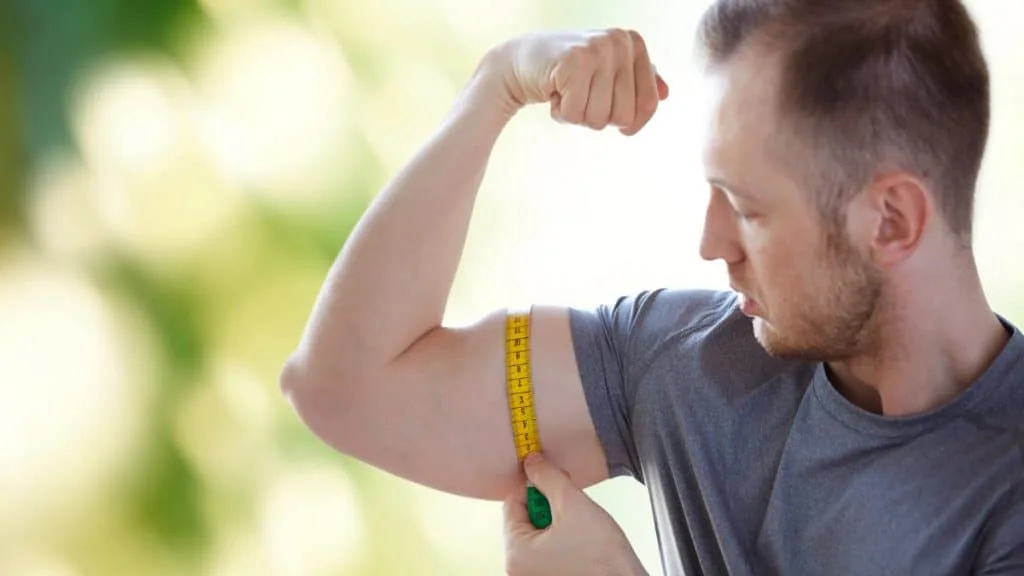
While just about anyone can build their arms by training consistently and eating an appropriate, high-protein diet, not everyone has the genetics to build 17 inch arms naturally.
Most women, for example, simply don’t have the frame size to ever achieve lean 17 inch biceps.
Likewise, if you’re a short guy (let’s say 5’6″ and under), then it’s doubtful that you’ll ever get 17″ biceps unless you’re willing to bulk up to a high body level, which may actually make your arms look smaller than they really are.
On the other hand, if you have a tall, solid frame and long arms, then there’s a decent chance that you can get 17 or 17 1/2 inch biceps as a natural lifter if you stay consistent in the weight room and are willing to gain some body mass to facilitate new arm development.
References
- Heymsfield, S. B., Gallagher, D., Mayer, L., Beetsch, J., & Pietrobelli, A. (2007). Scaling of human body composition to stature: new insights into body mass index. The American Journal of Clinical Nutrition, 86(1), 82–91. https://doi.org/10.1093/ajcn/86.1.82
- Centers for Disease Control and Prevention. (2021, January). Anthropometric Reference Data for Children and Adults: United States, 2015–2018 (National Center for Health Statistics). United States Department of Health and Human Services. https://www.cdc.gov/nchs/data/series/sr_03/sr03-046-508.pdf
- Shadid, S. (2003, January 1). Nutrient partitioning. Mayo Clinic. https://mayoclinic.pure.elsevier.com/en/publications/nutrient-partitioning
- Preiato, R. D. D. (2019, December 5). Dirty Bulking: Everything You Need to Know. Healthline. https://www.healthline.com/nutrition/dirty-bulking#downsides

